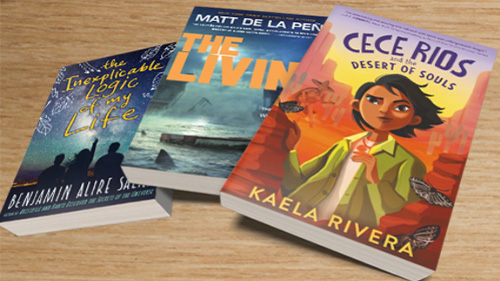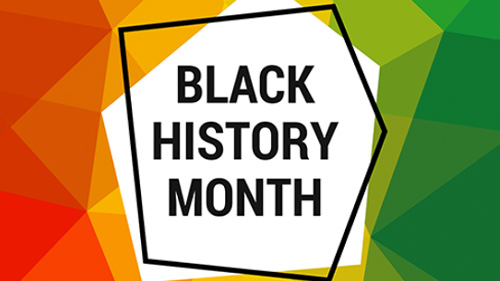Summer Adventure Mini Lesson: You Have a Photo—and a Story
Every time I open up Instagram, Facebook, or Twitter, I’m given the option to post to stories or urged to open the stories of others. Pictures that...
AP & Honors Mathematics
Explore Wiley titles to support both AP and Honors mathematics instruction.
Literacy Skills & Intensive Reading
Connections: Reading – Grades 6–12
Empower student success with a proven intensive reading program that develops strong reading skills in striving readers.
Drama, Speech & Debate
Basic Drama Projects 10th Edition
Build students’ confidence and competence with comprehensive, project-based theatre instruction.
Literature
Connections: Literature
Support learners as they study dynamic, relevant texts and bring the richness of diverse voices to students through literature.
Literature & Thought
Develop critical thinking, reading, and writing across literacy themes, genres, historical eras, and current events.
Language Arts
Vocabu-Lit® – Grades 6–12
Help students build word power using high-quality contemporary and classic literature, nonfiction, essays, and more.
Connections: Writing & Language
Help students develop grammar, usage, mechanics, vocabulary, spelling, and writing and editing skills.
Reading/English Language Arts
Measuring Up to the English Language Arts Standards
Incorporate standards-driven teaching strategies to complement your ELA curriculum.
English Language Learners
Measuring Up for English Language Learners
Incorporate research-based best practices for ELLs with an approach that includes a focus on language acquisition strategies.
Mathematics
Measuring Up to the Mathematics Standards
Incorporate standards-driven teaching strategies to complement your mathematics curriculum.
Foundations
Measuring Up Foundations
Help students master foundational math skills that are critical for students to find academic success.
Science
Measuring Up to the Next Generation Science Standards
Give students comprehensive NGSS coverage while targeting instruction and providing rigorous standards practice.
Assessment
Measuring Up Live
Deliver innovative assessment and practice technology designed to offer data-driven instructional support.
For a better website experience, please confirm you are in:
When it comes to assessments in English classrooms, many teachers fall in the routine of short answer questions, multiple choice questions, and essays. Rinse then repeat. While this can often be tedious for a teacher, imagine how your students feel.
After 15 years of teaching Shakespeare to freshmen, I began to think that there had to be a more interesting way for the students to not only show their comprehension of the text–in my case, Macbeth–but also to demonstrate their analysis and deeper understanding of the text. However, this is not just an assignment that can work with Shakespeare; any longer text will do.
A quick Google search can give you a variety of ideas for projects, but the idea of tracing a word throughout the use of the play was one that popped up quite often, but I figured there has to be a fresh way to look at the language of Shakespeare other than a literary analysis paper. Wouldn’t it be cool if we could consider the language as “data”? And poof! An idea was born.
For this project, I break my class into groups of 3 or 4 students. From a basket, they draw a word that is used throughout the text. In the case of Macbeth, they chose from the words “blood,” “night,” “hands,” “sleep,” and “time.” Again, this will work for any longer text; you will just need to have a list of words that show up throughout the text. Then as we read the play, students gather “data” from each act, namely when the word is used, by whom, the context in which it is used, and what that line actually means. I keep it simple and have them complete this data compilation form. This works well for two reasons: first, it keeps them more engaged as they read, and, second, they work on it an act at a time so it is a much less daunting task then completing it all at the end.
Gathering the data is only the beginning - as any good scientist knows. When we are finished reading the play, the real work begins. The students are charged with visually and statistically representing their findings through a pie chart, a bar graph, and a line graph. The pie chart is based on the number of times each character uses their traced word. The bar graph looks at how many times the word is used in each act. The line graph tracks the word’s connotation as the play progresses. A sample bar graph for using the word “sleep” is shown here.
When the graphs are completed, the fun begins. Students are asked to analyze their graphs. What do they notice? Why do they think they got the graphs they did? What does the data reveal about the meaning of the text? Students work with their group members to assemble a presentation that includes their graphs, analysis, and data and share it with the class in a presentation format.
I am continually amazed by the insights the students come up with when analyzing the data of the text. I also notice that this project makes analysis much more accessible for my left-brained students who scoff at the subjective nature of literary analysis. A bonus is this lends itself nicely to conversations about what is needed to make a graph valid and easy to read. Some students even told me that this project made analyzing the graphs and charts easier when they took the Science portion of the ACT. So I encourage you to try graphically analyzing a longer work this year.

Every time I open up Instagram, Facebook, or Twitter, I’m given the option to post to stories or urged to open the stories of others. Pictures that...

During Pride Month, everyone expects coming out stories or rainbow flags to take over their social media profile pics–and honestly, I love those...

In my first period class of sophomores at a high school on the Southwest side of San Antonio, I had one White student, one Muslim student, and the...

Discover how simulations can enhance learning in AP® U.S. Government and Politics. Engage students with hands-on activities like discretionary...

Annotation is a life skill, especially for our college-bound students. Reading something with a purpose, a strategy to comprehend at a higher level,...

As a public educator, one of the most vital things that I try to get my students to understand is how all the information they learn works together...

Many teachers consider the Document Based Question (DBQ) of the AP® European History Exam to be one of the more challenging aspects of the course....

In the first blog post of the Rhetoric Meets Remedy series, I discussed the importance of teaching for transfer. Teaching for transfer is vital...

In recent months I learned, along with others around the world, of the horrific stories of the mass unmarked grave sites of Indigenous, or...

On December 20, four days after his semester finished, my youngest son flew home for Christmas break. On December 29, he flew back—19 days before his...

Scads of English teachers have shown the movie Dead Poets Society in class to either begin their poetry unit or to try and inspire an appreciation...

Spring is in the air, and school children all across the nation are entering the last leg of the academic year. But before the final bell rings, many...

